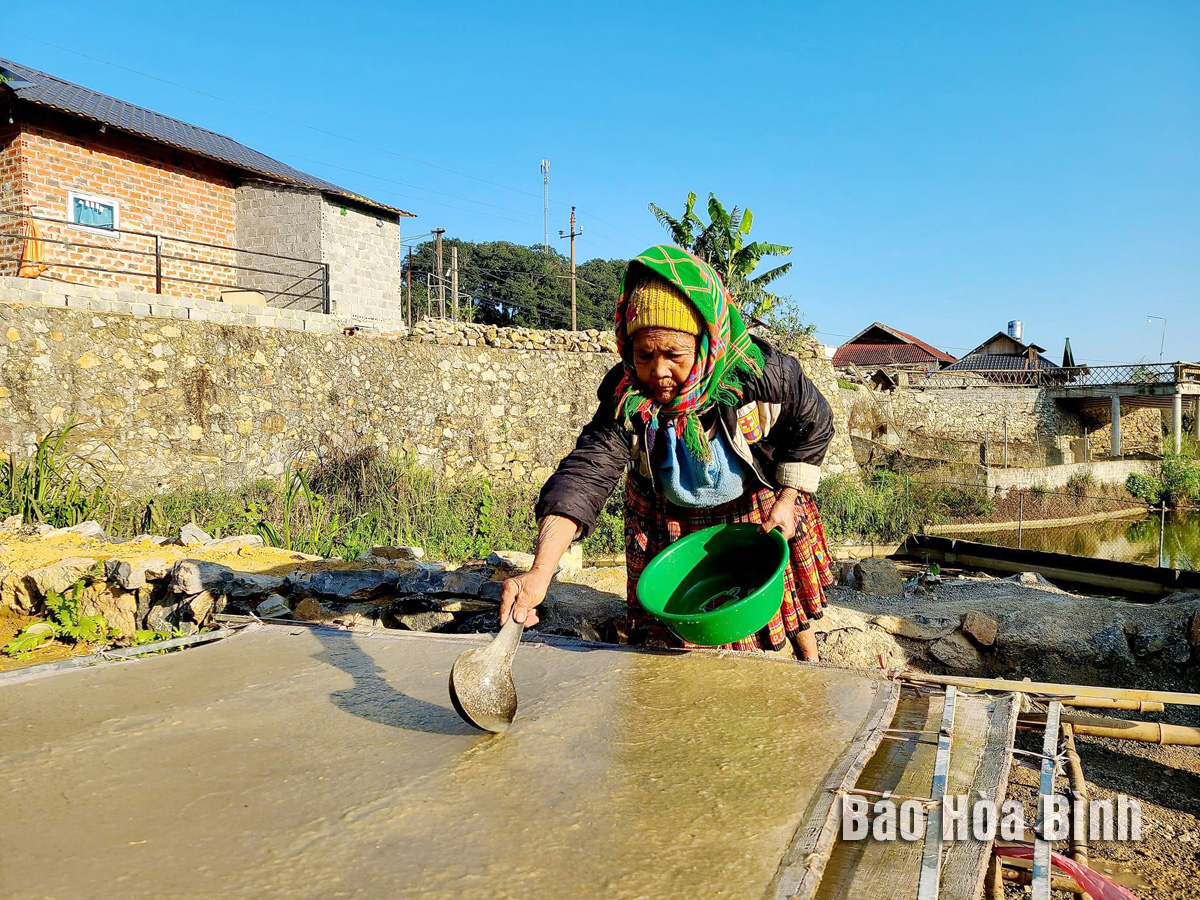



People in Hang Kia commune (Mai Chau) prepare sheets of paper to stick around their houses, considered talismans to bless their families with good health, luck, and prosperity in the new year.
According to traditional customs, Mong people celebrate their traditional Tet one month before the national Lunar New Year holiday. That is the time when people rest after rice and corn crops have been harvested.
The family of Vang A Tenh, who lives in Thung Ang village which is about 15km from Hang Kia commune’s centre, is busy preparing wine and meat to welcome their relatives. The village has 124 households and all of them are Mong ethnic people.
This year, the family decided to slaughter a pig for Tet and prepare six trays of food for guests. The remaining pork was salted and hung in the kitchen for use later.
Last year there were only a few dishes along with some corn cakes, men men (steamed corn flour – an indispensable traditional food of the Mong ethnic people) and wine, but this year witnesses many changes because people’s living conditions have been improved. There are dozens of dishes made from pork while banh giay (round glutinous rice cake) is replaced by sticky rice.
This year, his family is much happier as they welcome many guests. In Mong people’s perception, a lot of people visiting a family on this occasion is believed to bring good fortune to the host. After a year of hard work, this is the time for people to gather, chat with each other and wish for good luck in the new year.
"A few years ago, it was difficult to raise pigs and cows and people did not dare to slaughter them,” Tenh said.
This year, his family has escaped poverty and can slaughter a pig to celebrate Tet, he said, adding that many households in the neighbourhood follow suit so it's very happy.
During the Tet holidays, children accompany their parents to visit relatives and friends. Young people in new clothes wander around the village and play traditional games. This is also an opportunity for couples to confess their love.
At the end of May, the Hoa Binh Provincial Ethnic Arts Troupe organized a series of performances for residents in Region 2 and Region 3 communes across the province. Bringing art to ethnic communities in remote, isolated, and especially disadvantaged areas has become a meaningful activity. These are not merely artistic performances but also journeys to disseminate cultural values, enrich spiritual life, and contribute to preserving the cultural identity of ethnic minorities.